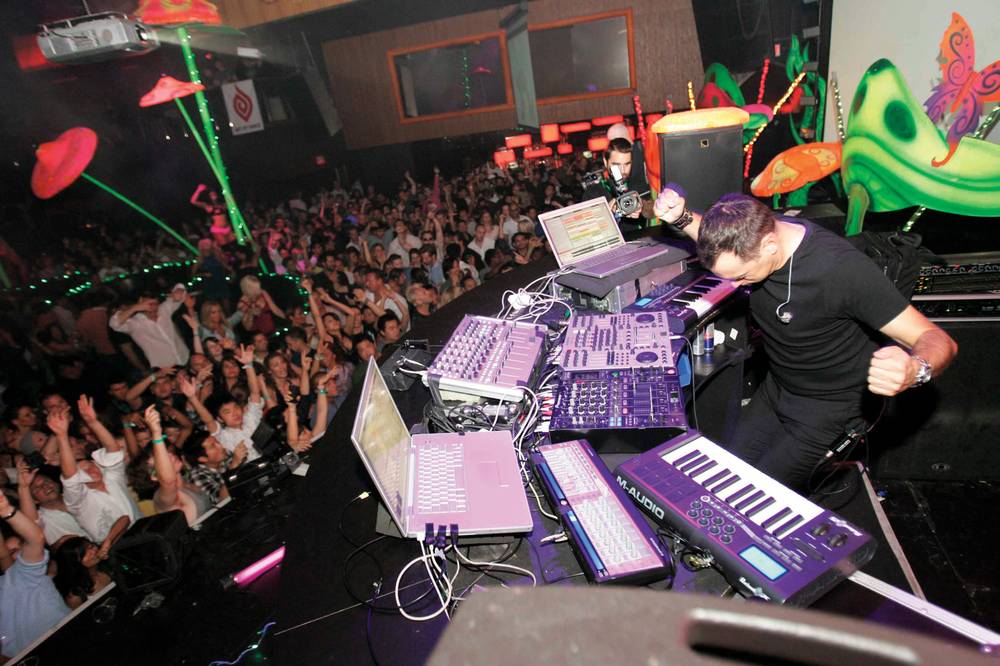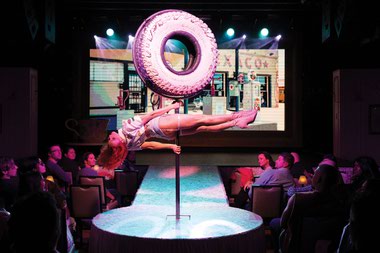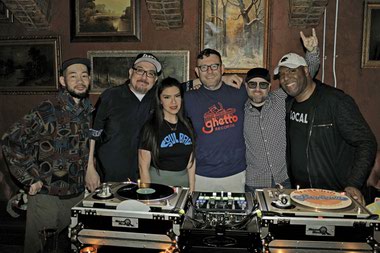Paul van Dyk, “For an Angel” (1994) For a trance track, it’s remarkably restrained, the main keyboard hook limited to seven sublime, spaced-out notes. For van Dyk, it was his first non-remix hit, making him a superstar in the German club scene. When he ascended the U.K. DJ ranks a few years later, he re-rubbed the track and gave it a second life, just as trance became the dominant sound in European clubs. It remains his signature song.
Green Velvet, “Flash” (1995) The Chicago producer/DJ born Curtis Jones may have made his initial mark with “Percolator” as Cajmere and debuted his Green Velvet alias with “Preacher Man,” but his lively house anthem “Flash” proved so irresistible, it shot to the top of Billboard’s Dance/Club Play chart. With its spoken-word narrative of a Pleasure Island-like “Club Bad” and its satirical, media-baiting account of kids getting high and drunk, it’s a no-brainer for his EDC set.
John Digweed, “Heaven Scent” (1999) Technically, the song credit goes to Bedrock, the production team of John Digweed and Nick Muir. But it will forever be associated with the man affectionately called Diggers, who released this melodic epic—a 10-and-a-half minute dancefloor odyssey that slowly but stridently rises before the dramatic a capella appearance of the synth chorus—on his own label at the height of progressive house’s popularity. And speaking of pinnacle moments, the producer/DJ himself played the track at the climax of the 2000 rave-themed movie, Groove. Just don’t expect Digweed to fish it out for EDC.
Kaskade, “Steppin’ Out” (2004) Before the Marquee resident became one of EDM’s first arena acts, before he transitioned to a more expansive, big-room aesthetic, Kaskade was synonymous with the more intimate West Coast house sound. Kicking off with a strummed guitar melody before the four-on-the-floor drumbeat and vocalist Bret Garner come in, it lured in fans of a lighter, sunnier, more organic brand of house music. A shame he doesn’t revisit his roots more often.
Eric Prydz, “Call on Me” (2004) How Steve Winwood’s synth-rock track “Valerie” escaped the 1980s is a wonder. In the capable hands of this then-up-and-coming Swedish producer, it once again lodged itself into the collective head of the mainstream, as his sample of Winwood’s vocal—actually re-sung by the English singer—helped make the ditty (and its remixes) a smash in Europe and a club hit in the States.
Sub Focus, “X-Ray” (2005) One might not normally associate drum ’n’ bass with the dance charts, but it’s more common in Britain, which made stars of producers like Roni Size, Goldie and Nick Douwma, aka Sub Focus. In 2005, he topped the U.K. Dance Chart with this tuneful DNB track, featuring an underlying guitar sample that sounds unmistakably like the signature riff from “Breed” by Nirvana, a huge teenage influence on Douwma.
Cedric Gervais, “Spirit in My Life” (2006) Before he single-handedly saved Lana Del Rey’s career with his year-owning, Grammy-winning remix of “Summertime Sadness,” Paris-to-Miami producer/DJ Cedric Gervais was on a gradual rise to American DJ stardom, with a handful of notable, if not smash dance singles. “Spirit in My Life,” with vocals by Caroline, was the first to resonate with clubbers and convincingly show Gervais’ artistic promise, as well his knack for choosing the right female singers.
Martin Garrix, “Animals” (2013) Garrix was already remixing artists like Christina Aguilera before breaking out with his first solo single-turned-monster club hit. “Animals” earned Garrix the distinction of being the youngest producer ever to top the Beatport Top 10, at the homework-addled age of 17, and proved fans of commercial EDM could champion a track free of vocals or star collaborators. Now the challenge for Garrix will be proving he’s not a one-hit wonder.








